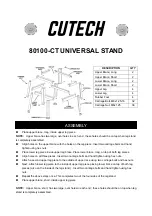
8.1.5.6 Vendor-Specific Security Erase SCSI Command
The vendor-specific SCSI command can be used to bypass the default Security Erase parameters
that are defined in the security erase configuration.
There are two commands that perform security erase/sanitize: 0xDF (an old method included for
backward compatibility with old products) and the more flexible 0xFF, which is strongly
recommended.
Table 24: Security Erase Command, New Structure
Bit
Byte
7 6 5 4 3 2 1 0
0
Operation Code = 0xFF
1
LUN 0x0A/0x0B
2
Parameter 3
3
Parameter 2
4
Parameter1
5
Master Command
6
Reserved
7
Reserved
8
Erase Mask
9
Control
The Sanitize command provides a high degree of flexibility, which enables executing
declassification procedures defined in various standards by providing different arguments to the
command. Specifically, the Sanitize command enables defining up to three stages of the
declassification process, where each stage can be either erasing the media and overwriting it with
a given character, or erasing the media and filling it with random information a specified number
of times.
If the number of erase-fill cycles is 0, the Sanitize command performs a complete erase but does
not fill the media. This is the fastest option; and is also known as the Security Erase option.
The default Sanitize procedure is factory-preset to the Security Erase option (erase the media
without media fill).
The Master Command has the following layout:
•
Bits 6-7: Subcommand selection
o
Value of 00b: Execute default Sanitize procedure
o
Value of 01b: Execute 1 subcommand, defined in bits 0-1
o
Value of 10b: Execute 2 subcommands, defined in bits 0-1 and 2-3
o
Value of 11b: Execute 3 subcommands, defined in bits 0-1, 2-3, and 4-5
33
Product Specification and User Manual FFD 3.5" Ultra320 SCSI
43-PS-0305-00 Rev. 2.0
















































